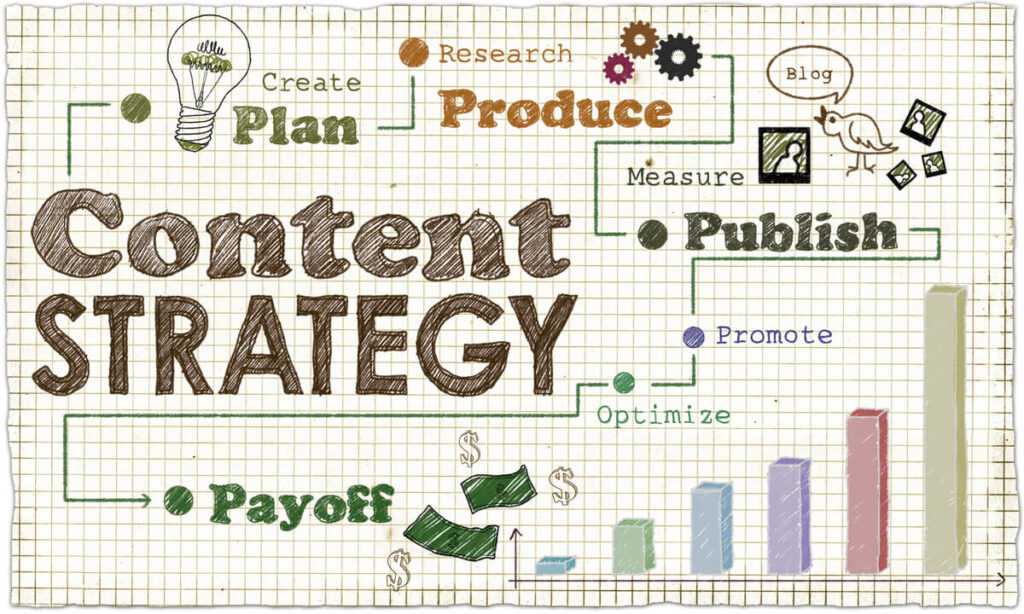LinkedIn is the cream of the crop social hub for professionals. You should start now if you still need to use it for marketing your services and products to your audience. But, before you begin, you need to consider using LinkedIn content to attract and engage your audience first.
This social networking platform is a valuable tool for any business. Therefore, you need to know how to create a LinkedIn content strategy. Also, LinkedIn content planning should be on top of your mind if your goal is to engage and grow your audience on the platform.
This article offers practical tips for creating engaging LinkedIn content and measuring its performance.
Identify Your LinkedIn Audience
Before creating any content, you must figure out whose attention you are reaching on LinkedIn. Consider factors such as the industry, position in the company, and interests of your target audience. Here LinkedIn’s Audience Insights feature can give you a hand. The tool provides detailed information on the demographics, interests, and behaviors of the platform’s users. Additionally, you can learn your target audiences’ age, location, job title, and business.
Next, to better understand your target audience, take some time to research their LinkedIn activity. Include looking at the types of content they share, the groups they are joining, and the influencers they follow.
Another way to learn about your target audience is to ask them for feedback. You can do this through surveys, polls, or asking for comments and suggestions on your LinkedIn posts. This way, you will get valuable insights into their interests and preferences.
Finally, track your performance. Check the metrics (number of views, likes, and comments your content receives) to understand what is resonating with your audience and what is not.
Set Clear Goals for Your LinkedIn Content
Setting clear goals for your LinkedIn content can help you concentrate your efforts and ensure that you create content that aligns with your overall objectives on the platform. Start by considering your overall goals on LinkedIn. For example, do you want to increase the number of followers, generate leads, drive website traffic, improve your search rankings, or build relationships with other professionals?
Once you have identified your overall goals, break them down into specific, measurable, achievable, relevant, and time-bound (SMART) goals. For example, instead of saying that you want to increase your followers, you might set a specific goal of increasing that number by 50% over the next three months.
Next, you must develop a content plan that aligns with these ambitions. Consider what types of content you will create and how often you will post. Last but not least, think of the channels you will use to share your content.
Remember to monitor and track your progress once you start creating and sharing content on LinkedIn to identify what is working and what needs adjustment to achieve your goals.
Choose the Right Content Formats
LinkedIn offers a variety of content formats, including text posts, articles, videos, and images. Think about which types of content will be most effective for achieving your goals and engaging your target audience. You may also consider LinkedIn-sponsored content.
Increase the Visibility with Articles and Blog Posts
By sharing articles and blog posts on LinkedIn, you can increase the visibility of your content and attract more views, likes, comments, shares, and overall engagement, which can increase your reach on the platform.
Sharing articles and blog posts on LinkedIn can also enhance your credibility and expertise in your industry. By providing valuable insights and information, you can establish yourself as an authority in your business and build trust with other users on the platform.
Some best practices for sharing articles and blog posts on LinkedIn:
- Use a clear and engaging headline to grab users’ attention and encourage them to read your content.
- Use subheadings and bullet points to improve the general user experience and make your content more accessible to users.
- Include calls to action to urge users to take a specific action, such as visiting your website or contacting you for more information.
Improve Interaction by Sharing Videos
Videos are highly engaging content, and sharing videos can improve audience interaction and bring your LinkedIn content success. They are also a great way to tell a story, and sharing them can enhance the storytelling aspect of your content. You can create content engagement and an immersive user experience using videos.
Sharing videos on LinkedIn can also help to increase brand awareness. By using branded videos, you can reinforce your brand and make it more recognizable to users on the platform.
Some best practices for sharing videos on LinkedIn:
- Use a clear and engaging title and thumbnail image to grab users’ attention and encourage them to watch your video.
- Keep the video short and focused on holding the viewer’s attention and ensuring that the content is easy to understand and digest.
- Use a professional-looking background and good lighting to improve the overall appearance of your videos and make them more attractive.
- Include calls to action to encourage viewers to take a specific action.
Grab Users’ Attention with High-Quality Images
There are several benefits to sharing images on LinkedIn. First, images can grab users’ attention and improve engagement, leading to more likes, comments, and shares, which helps increase your content’s visibility on the platform.
Sharing images on LinkedIn can also increase brand awareness. By using branded images, you can reinforce your brand and make it more recognizable to users on the platform. Also, they can enhance the storytelling aspect of your content, illustrate your points and make your content more engaging and attractive.
Some best practices for sharing images on LinkedIn:
- Use high-quality, professional-looking images.
- Include relevant captions with your images to explain the context of the image and provide additional information.
- Use hashtags to make your images more discoverable on LinkedIn.
- Use a mix of different types of images to keep the interest (product images, photos of your team, infographics, and other images).
Reach a Wider Audience with Sponsored Content
One of the main benefits of sponsored content on LinkedIn is that it can support you in reaching a wider audience and increase the chances that your content will be seen. You can use LinkedIn’s sponsored content platform for this, which allows you to target advertising to specific audiences. In other words, you are ensuring that it is seen by users who are likely to be interested in your content and engage with it.
The platform also provides insights and analytics that can help you understand the performance of your sponsored content campaigns. Furthermore, it helps with LinkedIn content optimization and improves your campaigns’ effectiveness over time.
One of the best practices for using sponsored content on LinkedIn is to use targeted advertising to ensure that your sponsored content is seen by users who are most likely to be interested in your content. And, by all means, to track and monitor how the campaigns perform.
Plan Your Content Calendar
Creating content for LinkedIn is only possible if you organize it well. To keep your content sorted, schedule it in advance by creating an effective and easy-to-manage content calendar that outlines your LinkedIn content marketing goals. In other words, brainstorm on what you will post when you post it and on which channels (e.g., your LinkedIn profile, LinkedIn groups, or a LinkedIn company page). This way, you will stay on track and ensure that you are consistently publishing new content.
Be flexible and adjust your content calendar as needed. For example, accommodate the types of content you create, the frequency of your posts, or the channels you use to share your content.
Monitor and Analyze Your Performance
LinkedIn provides analytics tools that you can use to track LinkedIn content metrics such as views, likes, and comments on the platform. These tools allow you to track the performance of your content on LinkedIn and understand how other users are receiving it.
You can access the analytics tools by going to the “Analytics” tab on your LinkedIn profile. The tool will give you an overview of your analytics data, including metrics.
In addition to the platform’s analytics tools, there are other LinkedIn content analysis methods. Some examples of these methods include:
Third-party analytics tools that can provide more detailed and in-depth insights.
Website traffic tracking shows how your content on LinkedIn is driving traffic to your website (if you have one) and how users are engaging with your content on the platform.
Overall, there are several different methods for following up on metrics, and using a combination of these methods can provide a more comprehensive view of your content’s performance.
Need Help Building Your LinkedIn Content Strategy?
If you are ready to improve your LinkedIn performance, reach a wider audience, and maximize your revenue while working on your personal branding, LeadIn Media is here to assist.
As a one-stop digital marketing agency, we have the expertise and experience to support your success on LinkedIn and help you reach your business goals. You can excel on the platform using our proven LinkedIn content strategy services.
Get in touch with us to discover how we can help you establish a strong presence on the world’s largest professional networking platform. Let’s work together to make your LinkedIn content strategy a smash!




